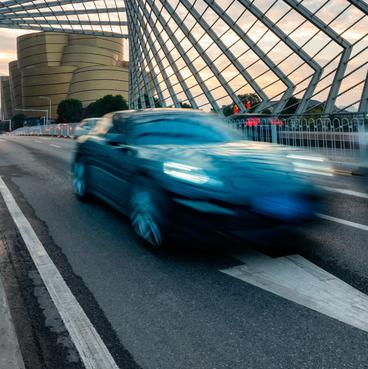Search Results for author: Hsueh-Ming Hang
Found 16 papers, 5 papers with code
Hierarchical B-frame Video Coding Using Two-Layer CANF without Motion Coding
no code implementations • CVPR 2023 • David Alexandre, Hsueh-Ming Hang, Wen-Hsiao Peng
The rate-distortion performance of our scheme is slightly lower than that of the state-of-the-art learned B-frame coding scheme, B-CANF, but outperforms other learned B-frame coding schemes.
Learned Hierarchical B-frame Coding with Adaptive Feature Modulation for YUV 4:2:0 Content
no code implementations • 29 Dec 2022 • Mu-Jung Chen, Hong-Sheng Xie, Cheng Chien, Wen-Hsiao Peng, Hsueh-Ming Hang
Most learned video codecs operate internally in the RGB domain for P-frame coding.
Learned Video Compression for YUV 4:2:0 Content Using Flow-based Conditional Inter-frame Coding
no code implementations • 15 Oct 2022 • Yung-Han Ho, Chih-Hsuan Lin, Peng-Yu Chen, Mu-Jung Chen, Chih-Peng Chang, Wen-Hsiao Peng, Hsueh-Ming Hang
To adapt our codec to YUV 4:2:0 content, we adopt a simple strategy of using space-to-depth and depth-to-space conversions.
Fast Vehicle Detection and Tracking on Fisheye Traffic Monitoring Video using CNN and Bounding Box Propagation
no code implementations • 4 Jul 2022 • Sandy Ardianto, Hsueh-Ming Hang, Wen-Huang Cheng
We design a fast car detection and tracking algorithm for traffic monitoring fisheye video mounted on crossroads.
ANFIC: Image Compression Using Augmented Normalizing Flows
1 code implementation • 18 Jul 2021 • Yung-Han Ho, Chih-Chun Chan, Wen-Hsiao Peng, Hsueh-Ming Hang, Marek Domanski
This paper introduces an end-to-end learned image compression system, termed ANFIC, based on Augmented Normalizing Flows (ANF).
FINED: Fast Inference Network for Edge Detection
1 code implementation • 15 Dec 2020 • Jan Kristanto Wibisono, Hsueh-Ming Hang
In contrast, we propose a Fast Inference Network for Edge Detection (FINED), which is a lightweight neural net dedicated to edge detection.
Learned Video Codec with Enriched Reconstruction for CLIC P-frame Coding
no code implementations • 14 Dec 2020 • David Alexandre, Hsueh-Ming Hang
More specifically, we designed a compressor network with Refine-Net for coding residual signals and motion vectors.
Traditional Method Inspired Deep Neural Network for Edge Detection
1 code implementation • 28 May 2020 • Jan Kristanto Wibisono, Hsueh-Ming Hang
Therefore, we propose a traditional method inspired framework to produce good edges with minimal complexity.
Semi-supervised Semantic Segmentation using Auxiliary Network
no code implementations • 25 Sep 2019 • Wei-Hsu Chen, Hsueh-Ming Hang
Then, in the unsupervised training phase, the unlabeled images are segmented and a subset of image pixels are picked up by the auxiliary network; and then they are used as ground truth to train the segmentation network.
Exploring Semantic Segmentation on the DCT Representation
no code implementations • 23 Jul 2019 • Shao-Yuan Lo, Hsueh-Ming Hang
The proposed method has an accuracy close to the RGB model at about the same network complexity.
 Ranked #84 on
Semantic Segmentation
on Cityscapes val
Ranked #84 on
Semantic Segmentation
on Cityscapes val
Multi-Class Lane Semantic Segmentation using Efficient Convolutional Networks
no code implementations • 22 Jul 2019 • Shao-Yuan Lo, Hsueh-Ming Hang, Sheng-Wei Chan, Jing-Jhih Lin
Several studies leverage a semantic segmentation network to extract robust lane features, but few of them can distinguish different types of lanes.
DSNet: An Efficient CNN for Road Scene Segmentation
no code implementations • 10 Apr 2019 • Ping-Rong Chen, Hsueh-Ming Hang, Sheng-Wei Chan, Jing-Jhih Lin
Although the deep learning-based road scene segmentation can achieve very high accuracy, its complexity is also very high for developing real-time applications.
An Autoencoder-based Learned Image Compressor: Description of Challenge Proposal by NCTU
no code implementations • 20 Feb 2019 • David Alexandre, Chih-Peng Chang, Wen-Hsiao Peng, Hsueh-Ming Hang
We propose a lossy image compression system using the deep-learning autoencoder structure to participate in the Challenge on Learned Image Compression (CLIC) 2018.
Incorporating Luminance, Depth and Color Information by a Fusion-based Network for Semantic Segmentation
1 code implementation • 24 Sep 2018 • Shang-Wei Hung, Shao-Yuan Lo, Hsueh-Ming Hang
It includes a sub-network to process depth maps and employs luminance images to assist the depth information in processes.
 Ranked #8 on
Real-Time Semantic Segmentation
on Cityscapes val
Ranked #8 on
Real-Time Semantic Segmentation
on Cityscapes val
Efficient Dense Modules of Asymmetric Convolution for Real-Time Semantic Segmentation
4 code implementations • 17 Sep 2018 • Shao-Yuan Lo, Hsueh-Ming Hang, Sheng-Wei Chan, Jing-Jhih Lin
Real-time semantic segmentation plays an important role in practical applications such as self-driving and robots.
 Ranked #10 on
Semantic Segmentation
on CamVid
Ranked #10 on
Semantic Segmentation
on CamVid
Efficient Road Lane Marking Detection with Deep Learning
no code implementations • 11 Sep 2018 • Ping-Rong Chen, Shao-Yuan Lo, Hsueh-Ming Hang, Sheng-Wei Chan, Jing-Jhih Lin
Lane mark detection is an important element in the road scene analysis for Advanced Driver Assistant System (ADAS).
 Ranked #14 on
Semantic Segmentation
on CamVid
Ranked #14 on
Semantic Segmentation
on CamVid







